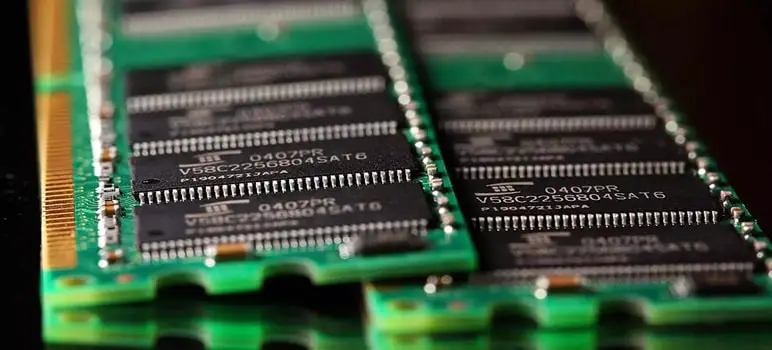Random Access Memory (RAM) is one of the basic components of a computer. There’s a new type of RAM on the way to production called “RRAM“. No, that’s not a typo: There’s two R’s because the first R stands for “Resistive”. The use of this non-volatile RAM could have a major effect on everything from consumer electronics to server farms.
How Does It Work?
While DRAM and Flash memory use electricity to write data, RRAM uses resistance. There are several competing formulas for making RRAM, but they all use dielectric material. When exposed to high voltage electric current, the dielectric material switches between being an insulator to a conductor, but it stays stable when low voltage current is applied.
By changing states, the dielectric material can be an open or closed (0 or 1) circuit, which is then read by seeing if low voltage current will pass through the circuit. At least one patent has already been filed for this process, but production versions are just now becoming a reality.
What are the Advantages of RRAM Over Other Memory Types?
There are two key advantages for this new technology: speed and power consumption.
It takes much less electricity to operate this memory compared to other RAM technologies on the market, even when considering the current loss when transforming the low voltage available from a computer power supply to the high current needed to write data. Reading data takes much less electricity than any other competing technology.
Switching the material’s state can be done very quickly: 10 nanoseconds versus 100,000 nanoseconds for NAND Flash. Also, unlike NAND Flash, each bit of RRAM can be changed individually. No matter how much data needs to be changed, Flash must be written in blocks as large as 16kb, making minor changes extremely slow. That lets RRAM apply small changes to data far faster than Flash can.
Where will RRAM Be Used?
Panasonic is leading the way in development for consumer devices, with the aim of adding the memory to their line of electronics. They estimate that switching to RRAM could reduce the electricity used by their HDTVs while in standby mode by as much as 2/3rds. Other manufacturers will certainly follow.
In stand-alone devices like USB drives, RRAM can use 90% less electricity than flash memory. Processor manufacturers are also looking to RRAM for stable on board cache for quicker wake up times.
Currently, hard drive companies will build a combination drive that uses NAND Flash for bulk storage and RRAM for cache. A simulation study conducted by Japan’s Chuo University found that adding a 1 GB RRAM cache to a Flash SSD could result in write performance that’s 11 times faster than a regular SSD while also using about 80% less power. This way, small changes could be done quickly and repeatedly inside the RRAM, writing occasionally to the Flash storage.
Although maximum write speed for Flash drives may be extremely high, in the real-world, the average write speed may be as little as 5 MB per second, while a hybrid drive may reach 55 MB per second for intensive applications. With a better-integrated hybrid system, the university thinks power consumption could be brought down to as little as 5% of that used by a standard SSD. That represents a major savings in electricity, as it means both less direct power usage and less cooling required to operate a server farm.
When will RRAM Hit the Market?
Small capacity chips should reach the market in devices by the end of 2012. Hybrid drives and RRAM-containing processors should follow with the first made available next year, although it will be years before pure RRAM drives will be available in sizes that can compete with NAND Flash.
Citations: The patent Google has on RRAM


I had no idea that there where a new RRAM on the way. Seems like it’s time to get a new motherboard next year, so I can use RRAM.
This is certainly interesting tech news. I never actually heard of RRAM before and they look to be the future. If they get utilized on portable computers, their usage time will definitely increase without having to actually increase the size of the battery of the unit.
I wonder how expensive these RRAMs will be. Which reminds me of a question I’ve read a couple of days ago: a woman bought an antivirus license and realized that her PC froze from time to time because of it. What’s better? Buy a new memory or change the antivirus?